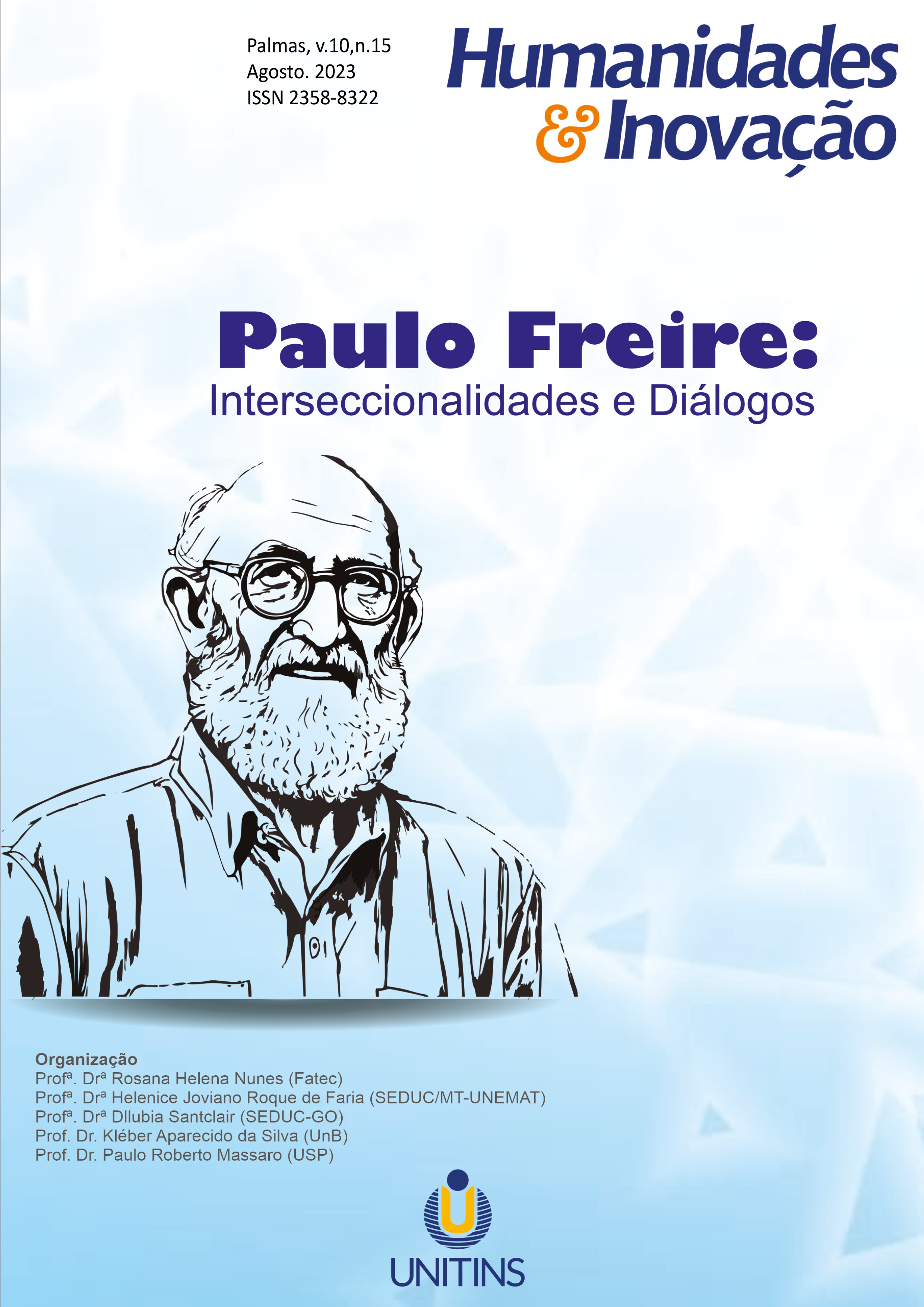IMPORTÂNCIA DAS REDES SOCIAIS COMO FERRAMENTAS DE EDUCAÇÃO EM SAÚDE FRENTE AO TRATAMENTO FARMACOLÓGICO DA COVID-19 E AS VACINAS PARA PREVENÇÃO DO SARS-COV-2: UM RELATO DE EXPERIÊNCIA
Abstract
Notícias sobre a COVID-19 são rapidamente compartilhadas nas redes sociais. Por serem de fácil acesso e em se tratando de uma nova doença, é necessário fazer a educação em saúde por meio de informações fidedignas e evidências científicas atualizadas. Nesse sentido, o objetivo desta pesquisa é relatar a importância das redes sociais como ferramentas de educação em saúde acerca do tratamento farmacológico da COVID-19 e das vacinas para prevenção do SARS-CoV-2. A metodologia utilizada compreendeu um estudo descritivo e aplicado, a partir de publicações em um perfil público na rede social Instagram. A partir da realização de 28 publicações abordando farmacocinética, farmacodinâmica, contraindicações, interações medicamentosas, efeitos e reações adversas, toxicidade sobre o tratamento farmacológico da COVID-19, e informações das vacinas para prevenção do SARS-CoV-2, percebeu-se que é possível realizar a educação em saúde de forma virtual, tendo as redes sociais como ferramentas para disseminar conhecimento e promoção da saúde.
References
BALATSOUKAS, P. et al. The role of social network technologies in online health promotion: a narrative review of theoretical and empirical factors influencing intervention effectiveness. Journal of Medical Internet Research, v. 17, n. 6, e141, 2015. Disponível em: https://www.jmir.org/2015/6/e141/. Acesso em: 20 jan. 2022.
BENIS, A. et al. Social media engagement and influenza vaccination during the COVID-19 pandemic: cross-sectional survey study. Journal of Medical Internet Research, v. 23, n. 3, e25977, 2021. Disponível em: https://www.jmir.org/2021/3/e25977. Acesso em: 20 jan. 2022.
BOULOS, M. N. K.; GIUSTINI, D. M.; WHEELER, S. Instagram and whatsApp in health and healthcare: an overview. Future Internet, v. 8, n. 3, p. 37-50, 2016. Disponível em: https://www.mdpi.com/1999-5903/8/3/37. Acesso em: 20 jan. 2022.
CARTLEDGE, P.; MILLER, M.; PHILLIPS, B. The use of social-networking sites in medical education. Medical Teacher, v. 35, n. 10, p. 847-857, 2013. Disponível em: https://www.tandfonline.com/doi/full/10.3109/0142159X.2013.804909. Acesso em: 20 jan. 2022.
GONZÁLEZ-PADILLA, D. A.; TORTOLERO-BLANCO, L. Social media influence in the COVID-19 pandemic. International Brazilian Journal of Urology, v. 46, n. 1, p. 120-124, 2020. Disponível em: https://www.scielo.br/j/ibju/a/nV6DpnQf7GWYrd94ZcHQBWz/?lang=en. Acesso em: 20 jan. 2022.
GUIMARÃES, V. H. A. et al. Knowledge about COVID-19 in Brazil: cross-sectional web-based study. JMIR Public Health Surveill, v. 7, n. 1, e24756, 2021. Disponível em: http://publichealth.jmir.org/2021/1/e24756/. Acesso em: 20 jan. 2022.
KHUBCHANDANI, J. et al. COVID-19 morbidity and mortality in social networks: does it influence vaccine hesitancy? International Journal of Environmental Research and Public Health, v. 18, n.18, 9488, 2021. Disponível em: https://www.mdpi.com/1660-4601/18/18/9448. Acesso em: 20 jan. 2022.
LATIF, M. Z. et al. Use of smart phones and social media in medical education: trends, advantages, challenges and barriers. Acta Informatica Medica, v. 27, n. 2, p.133-138, 2019. Disponível em: https://www.ncbi.nlm.nih.gov/pmc/articles/PMC6688444/. Acesso em: 20 jan. 2022.
MARQUES, F. L. S. N. Realidade virtual em saúde: já realidade ou ainda virtual? Journal of Health Informatics, v. 10, n. 2, p. 1-2, 2018. Disponível em: www.jhi-sbis.saude.ws. Acesso em: 20 jan. 2022.
PESCARINI, J. M. et al. Methods to evaluate COVID-19 vaccine effectiveness, with an emphasis on quasi-experimental approaches. Ciência & Saúde Coletiva, v. 26, n. 11, p. 5599-5614, 2021. Disponível em: https://www.scielo.br/j/csc/a/RjvCPyxNCqhmTNJpWNNdMbS/?lang=en. Acesso em: 20 jan. 2022.
SANTOS-PINTO, C. D. B.; MIRANDA, E. S.; OSORIO-DE-CASTRO, C. G. S. O “kit-covid” e o programa farmácia popular do Brasil. Cadernos de Saúde Pública, v. 37, n. 2, e00348020, 2021. Disponível em: https://www.scielo.br/j/csp/a/KbTcQRMdhjHSt7PgdjLNJyg/. Acesso em: 20 jan. 2022.
SHI, J.; POORISAT, T.; SALMON, C. T. The use of social networking sites (SNSs) in health communication campaigns: review and recommendations. Health Communication, v. 33, n. 1, p. 49-56, 2018. Disponível em: https://www.tandfonline.com/doi/abs/10.1080/10410236.2016.1242035?journalCode=hhth20. Acesso em: 20 jan. 2022.
VENEGAS-VERA, A. V.; COLBERT, G. B.; LERMA, E. V. Positive and negative impact of social media in the COVID-19 era. Reviews in Cardiovascular Medicine, v. 21, n. 4, p. 561–564, 2020. Disponível em: https://www.imrpress.com/journal/RCM/21/4/10.31083/j.rcm.2020.04.195. Acesso em: 20 jan. 2022.
VILARINHO-REZENDE, D. et al. Relação entre tecnologias da informação e comunicação e criatividade: revisão da literatura. Psicologia: Ciência e Profissão, v. 36, n. 4, p. 877-892, 2016. Disponível em: https://www.scielo.br/j/pcp/a/PHDrcMcfXpxnzWCXXmS5CXP/abstract/?lang=pt. Acesso em: 20 jan. 2022.
Copyright Notice
The submission of originals to this periodic implies in transference, by the authors, of the printed and digital copyrights/publishing rights. The copyrights for the published papers belong to the author, and the periodical owns the rights on its first publication. The authors will only be able to use the same results in other publications by a clear indication of this periodical as the one of its original publication. Due to our open access policy, it is allowed the free use of papers in the educational, scientific and non-commercial application, since the source is quoted (please, check the Creative Commons License on the footer area of this page).











